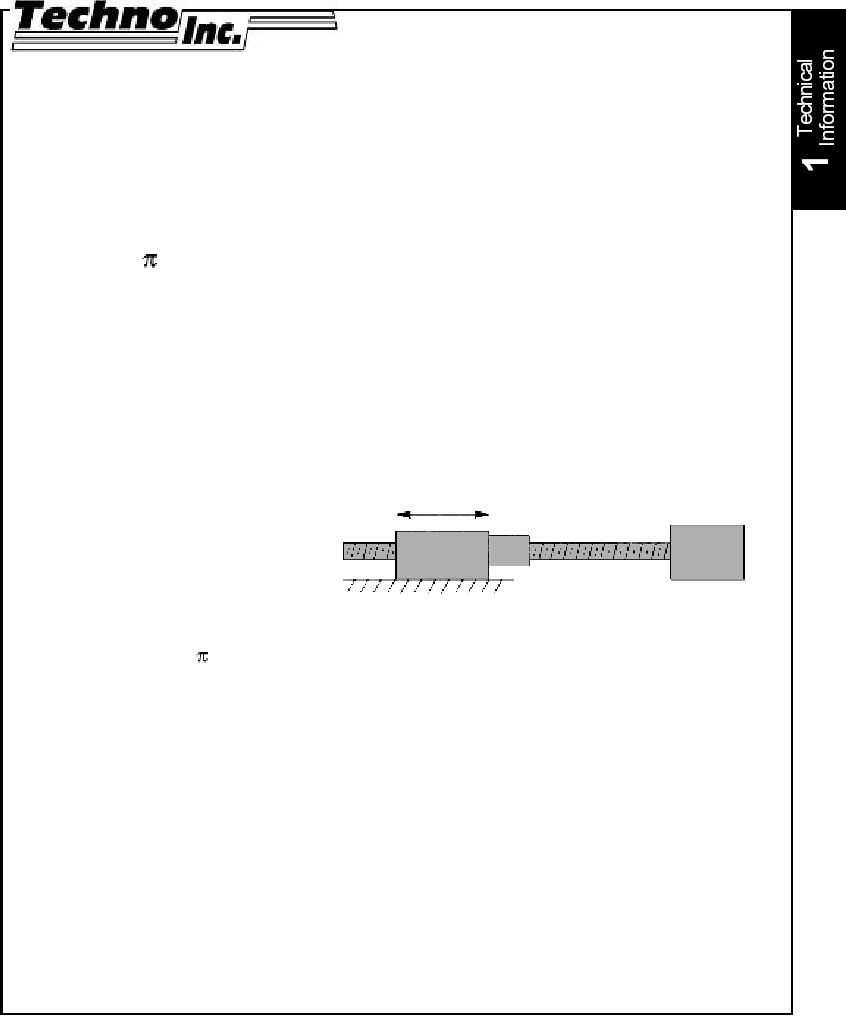Technical Information
techquestions@techno-isel.com
27
Lead Screw Formulas and Sample Calculations
Linear Speed (ipm)
steps / second 1
Linear Speed = –––––––––––––––– x 60 x –––
steps / revolution p
where:
p = lead screw pitch in threads per inch
Axial Force (lb)
2
Force = –––– x T x p x eff.
16
where:
T
= torque (oz in)
p
= lead screw pitch in threads per inch
eff. = efficiency expressed as a decimal: 90% = 0.90
Note: Ball screws are generally 85% to 95% efficient. Acme lead screw efficiency is generally 35% to 45%,
but can be as high as 85%.
A. Calculating the torque required to accelerate a mass
moving horizontally and driven by a ball bearing lead
screw and nut. The total torque the motor must provide
includes the torque required to:
a. accelerate the weight
b. accelerate the lead screw
c. accelerate the motor rotor
d. overcome the frictional force
To calculate the rotational equivalent of weight w:
1
1 2
I(eq) = w x –––– x (–––)
p2 2
where:
w
= weight (lb)
p
= pitch (threads per inch)
I(eq) = equivalent polar inertia (lb in2)
to calculate lead screw inertia (steel screw)
I (screw) = D4 x length x .028
Example:
Weight = 1000 lb
Velocity = 0.15 feet per second
Time to Reach Velocity = 0.1 seconds
Ball Screw Diameter = 1.5"
Ball Screw Length = 48"
Ball Screw Pitch = 5 threads per inch
Motor Rotor Inertia = 2.5 lb in2
Friction Force to Slide Weight = 6 oz
Motor
w
·
·
·


